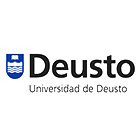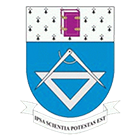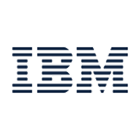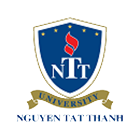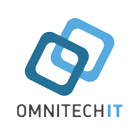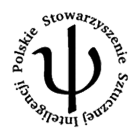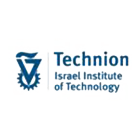Cloudlets: at the Leading Edge of Cloud-Mobile Convergence
Mahadev Satyanarayanan
School of Computer Science
Carnegie Mellon University

Abstract:
Since the dawn of mobile computing two decades ago, the unique constraints of mobility have shaped the software architectures of systems. We now stand at the threshold of the next major transformation in computing: one in which the rich sensing and interaction capabilities of mobile devices are seamlessly fused with compute-intensive and data-intensive processing in the cloud. This heralds a new genre of software that augments human perception and cognition in a mobile context. Major obstacles to realizing this vision are the large and variable end-to-end WAN latency between mobile device and cloud, fierce demand for ingress bandwidth into the cloud, and the hazard of WAN disruptions.
Cloudlets have emerged as an architectural solution to these problems. A cloudlet represents the middle tier of a 3-tier hierarchy: mobile device --- cloudlet --- cloud, and can be viewed as a "data center in a box" whose goal is to "bring the cloud closer". A cloudlet-based hardware/software ecosystem inspires futuristic visions such as real-time cognitive assistance on wearable hardware for attention-challenged mobile users, edge analytics in the Internet of Things, ubiquitous mobile access to one's legacy PC world, and robust access to cloud services in hostile environments. Realizing these visions will require many technical challenges to be overcome. It will also require us to rethink a wide range of issues in areas such as privacy, software licensing, and business models.
Joint work with: Yoshihisa Abe (CMU), Victor Bahl (Microsoft Research), Vas Bala (IBM Research), Jeff Boleng (CMU-SEI), Ben Bradshaw (CMU-SEI), Ramon Caceres (AT&T Research), Zhou Chen (CMU), Sarah Clinch (Lancaster University), Nigel Davies (Lancaster University), Sebastian Echeverria (CMU-SEI), Roxana Geambasu (Columbia University), Benjamin Gilbert (CMU), Kiryong Ha (CMU), Jan Harkes (CMU), Martial Hebert (CMU), Wenlu Hu (CMU), Kaustubh Joshi (AT&T Research), Grace Lewis (CMU-SEI), Ed Morris (CMU-SEI), Padmanabhan Pillai (Intel Labs), Wolfgang Richter (CMU), Dan Siewiorek (CMU), Soumya Simanta (CMU-SEI), Pieter Simoens (CMU & University of Ghent), Roy Want (Google), Yu Xiao (CMU & Aalto University)
Short Bio:
Satya is an experimental computer scientist who has pioneered research in distributed systems, mobile computing and pervasive computing. Early in his career, Satya was a principal architect and implementor of the Andrew File System (AFS) which pioneered the use of scalable file caching, ACL-based security, and volume-based system administration for enterprise-scale information sharing. AFS was commercialized by IBM, is in widespread use today as OpenAFS, and has heavily influenced the NFS v4 network file system protocol standard. Building on the AFS work, Satya was a principal architect of the Coda File System which introduced the concepts of disconnected operation and bandwidth-adaptive weakly-connected operation in distributed file systems. The Coda concepts of hoarding, reintegration and application-specific conflict resolution can be found in the hotsync capability of mobile devices today. Key ideas from Coda were incorporated by Microsoft into the IntelliMirror component of Windows 2000 and the Cached Exchange Mode of Outlook 2003. The Odyssey project explored the partitioning of responsibility between the operating system and applications in adapting to wide variability in critical resources such as wireless network bandwidth and energy in mobile computing. Through these projects and other projects such as Aura and Chroma, Satya was a co-inventor of many supporting technologies for mobile computing such as such as cyber foraging, data staging, lookaside caching, translucent caching and application-aware adaptation. His most recent work in mobile computing has focused on the role of virtual machine (VM) technology, in the context of the Internet Suspend/Resume system and the use of cloudlets for cyber foraging, His most recent work in distributed systems has focused on deep search of non-text data such as digital photographs and medical images, in the context of the Diamond project. In the Olive project, he is exploring the streaming and prefetching of virtual machines over the Internet as the foundational mechamism for archived executable content.
Satya is the Carnegie Group Professor of Computer Science at Carnegie Mellon University. He received the PhD in Computer Science from Carnegie Mellon, after Bachelor's and Master's degrees from the Indian Institute of Technology, Madras. He is a Fellow of the ACM and the IEEE. He was the founding Program Chair of the HotMobile series of workshops, the founding Editor-in-Chief of IEEE Pervasive Computing, and the founding director of Intel Research Pittsburgh. He is an Advisor to Maginatics, which is creating a 21st-century cloud-based realization of the AFS and Coda vision.
Smarter Cities and Internet of Things
Ron Baker
Distinguished Engineer, Chief Architect Smarter Cities & Operations
IBM Software Solutions Group

Abstract:
The amount of data gathered by Cities is growing at an astounding rate, and the adoption of mobile devices and infrastructure sensors has fueled that growth. This data holds insights that can be harvested for understanding trends, optimizing resources, and making better decisions. This talk will cover the current convergence of technologies and techniques that making this possible, and give several examples that we've encountered. Included is an explanation of the analytics used in these cases, and references to more detail. The examples cover the full spectrum of City services, from planning to infrastructure management to social services, as well as other venues that have city-like characteristics. Finally, the impact of Open Government initiatives on these trends will be discussed.
Bio:
Ron started his career in the Aerospace and Petroleum industries, designing and writing numerical programs for engineering graphics and robotics applications. As relational databases began to appear, he was one of the early designers for their use in large-scale financial and configuration management systems. After several years, he moved into research on database parallelism, integrity constraints, and transitive closure problems. He holds several patents in identification and naming reconciliation heuristics and analytics.
He is currently a Distinguished Engineer leading the Smarter Cities product suite and is responsible for moving into new areas such as stadiums and airports operations, and the growing ecosystem of domains, including water, transportation, energy, public safety, and city planning optimization. He directs the effort to provide more advanced analytics and the wealth of IBM Research technologies employed in cities around the world into deliverable software products that help create a Smarter Planet.











